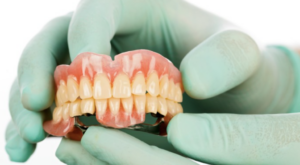Selecting the Right Dental Bridge: Exploring Your Options
Having a missing tooth or more than one can cause discomfort and lower self-esteem. Not only this, but it can also affect how you speak, eat, and smile. A dental bridge is an excellent option for people who are missing one or more teeth. It can help improve your appearance and restore your ability to eat and speak with confidence. But with so many dental bridge options out there, how do you know which type is right for you? In this blog post, we will explore the different types of dental bridges available to help you make an informed decision.
Different types of dental bridges
1. Traditional Dental Bridge:

The most common type of dental bridge available, the traditional bridge consists of a pontic (false tooth) attached to two dental crowns that are fitted over the adjacent teeth. This bridge is most suitable for people who have natural teeth on both sides of the gap as the adjacent teeth need to be shaped for crowns. Traditional bridges are durable and can last for up to 10 years or more with proper oral care.
2. Cantilever Dental Bridge:

Similar to the traditional bridge, a cantilever bridge is supported by one adjacent tooth instead of two. If you only have one natural tooth next to the gap, a cantilever bridge may be the best option. However, it’s important to note that this type of bridge can put additional stress on the supporting tooth, so it may not be suitable for back teeth.
3. Maryland Dental Bridge:
A Maryland dental bridge is a conservative option that requires minimal preparation for the adjacent teeth. Instead of dental crowns, the pontic is held in place with metal or porcelain wings that are bonded to the adjacent teeth. This type of bridge is not as strong as traditional bridges, so it’s best suited for low-stress areas like the front teeth.
4. Implant-Supported Dental Bridge:

This type of dental bridge is secured in place with dental implants instead of adjacent teeth. Implant-supported bridges are more expensive than traditional bridges, but they offer the most stability and can last a long time. If you have several missing teeth in a row, an implant-supported bridge may be the best option for you.
5. Removable Dental Bridge:

As the name suggests, a removable dental bridge can easily be taken out for cleaning or sleeping. This type of bridge consists of a pontic that is attached to a metal or acrylic base that fits securely over the gums. Removable bridges are best suited for people who have a small gap or missing teeth in the front of the mouth.

Choosing the right dental bridge is a significant decision that can impact your oral health and appearance for many years to come. By considering your personal needs and consulting with your dental professional, you can determine which type of bridge is the best choice for you. Whether you choose a traditional, cantilever, Maryland, implant-supported, or removable dental bridge, restoring your smile can help boost your confidence and improve your quality of life. Contact your dental professional to discuss your options today.
